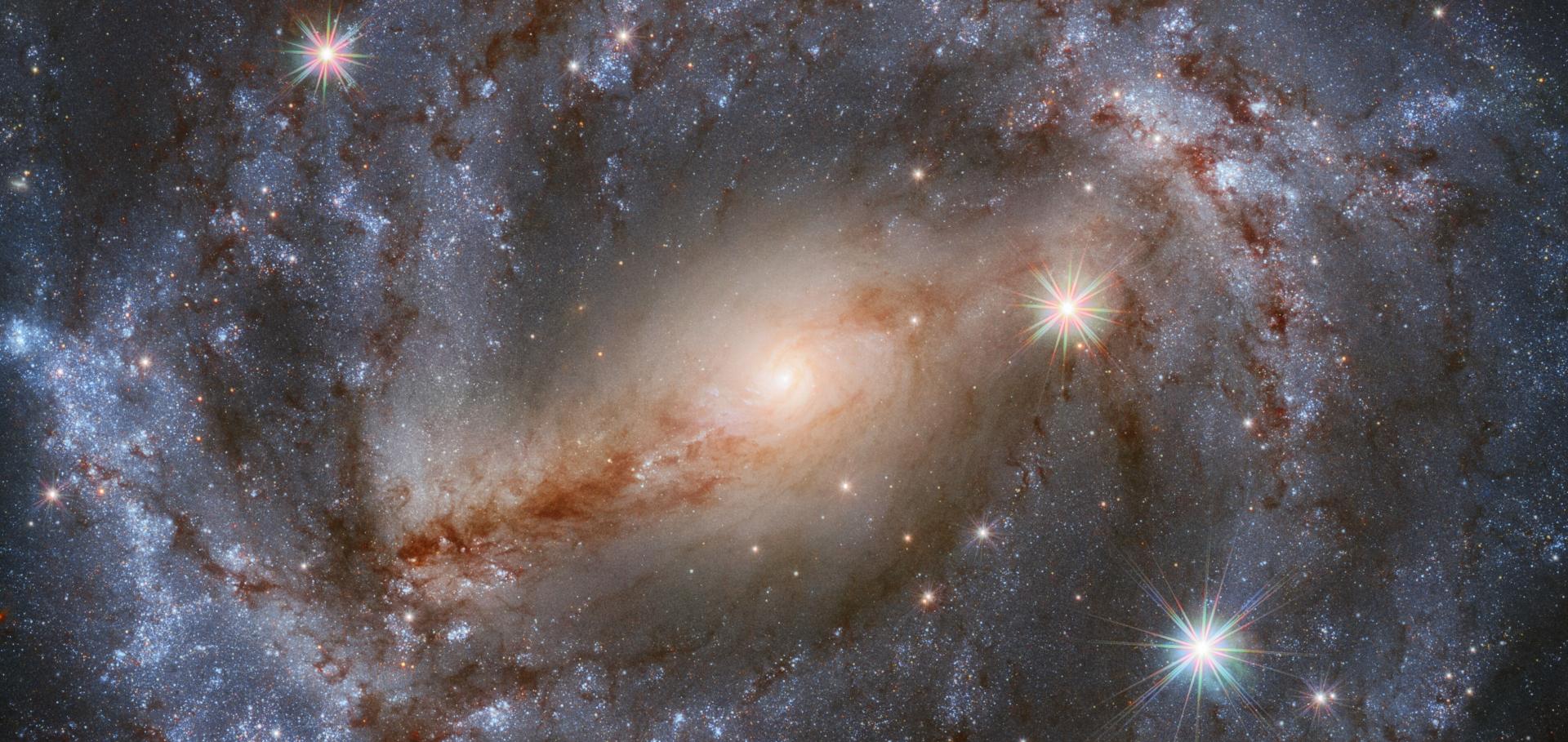A high angular resolution view of the PAH emission in Seyfert galaxies using JWST/MRS data
Astronomy & Astrophysics Letter 666:L5 (2022) 12 pages
Abstract:
Polycyclic aromatic hydrocarbons in seyfert and star-forming galaxies
Monthly Notices of the Royal Astronomical Society Oxford University Press 509:3 (2021) 4256-4275
Abstract:
Polycyclic Aromatic Hydrocarbons (PAHs) are carbon-based molecules resulting from the union of aromatic rings and related species, which are likely responsible for strong infrared emission features. In this work, using a sample of 50 Seyfert galaxies (DL < 100 Mpc) we compare the circumnuclear (inner kpc) PAH emission of AGN to that of a control sample of star-forming galaxies (22 luminous infrared galaxies and 30 H ii galaxies), and investigate the differences between central and extended PAH emission. Using Spitzer/InfraRed Spectrograph spectral data of Seyfert and star-forming galaxies and newly developed PAH diagnostic model grids, derived from theoretical spectra, we compare the predicted and observed PAH ratios. We find that star-forming galaxies and AGN-dominated systems are located in different regions of the PAH diagnostic diagrams. This suggests that not only are the size and charge of the PAH molecules different, but also the nature and hardness of the radiation field that excite them. We find tentative evidence that PAH ratios in AGN-dominated systems are consistent with emission from larger PAH molecules (Nc > 300–400) as well as neutral species. By subtracting the spectrum of the central source from the total, we compare the PAH emission in the central versus extended region of a small sample of AGN. In contrast to the findings for the central regions of AGN-dominated systems, the PAH ratios measured in the extended regions of both type 1 and type 2 Seyfert galaxies can be explained assuming similar PAH molecular size distribution and ionized fractions of molecules to those seen in central regions of star-forming galaxies.
Low-power jet-interstellar medium interaction in NGC 7319 revealed by JWST/MIRI MRS
Astronomy & Astrophysics 665:L11 (2022) 10 pp.
Abstract:
We present JWST/MIRI MRS spectroscopy of NGC 7319, the largest galaxy in the Stephan's Quintet, observed as part of the Early Release Observations (ERO). NGC 7319 hosts a type 2 active galactic nucleus (AGN) and a low-power radio jet (L1.4 GHz = 3.3 × 1022 W Hz−1) with two asymmetric radio hotspots at 430 pc (N2) and 1.5 kpc (S2) projected distances from the unresolved radio core. The MRS data suggest that the molecular material in the disk of the galaxy decelerates the jet and causes this length asymmetry. We find enhanced emission from warm and hot H2 (Tw = 330 ± 40 K, Th = 900 ± 60 K) and ionized gas at the intersection between the jet axis and dust lanes in the disk. This emission is coincident with the radio hotspot N2, the hotspot closer to the core, suggesting that the jet-interstellar medium (ISM) interaction decelerates the jet. Conversely, the mid-infrared emission at the more distant hotspot is fainter, more highly ionized, and with lower H2 excitation, suggesting a more diffuse atomic environment where the jet can progress to farther distances. At the N2 radio hotspot, the ionized gas mass (Mion = (2.4-12)×105 M⊙) is comparable to that of the warm H2, but the former is more turbulent (σion ∼ 300 vs. σH2 ∼ 150 km s−1), so the mechanical energy of the ionized gas is ∼1.3-10 times higher. From these estimates, we find that only < 1% of the jet energy remains as mechanical energy in these two ISM phases at N2. We also find extended (r > 0.3-1.5 kpc) high-ionization emission ([Mg V], [Ne VI], and [Ne V]) close to the radio hotspots. This initial analysis of NGC 7319 shows the potential of MIRI/MRS to investigate the AGN feedback mechanisms due to radio jets and their radiation field in the, often heavily dust-enshrouded, central regions of galaxies. Understanding these mechanisms is an essential ingredient in the development of cosmological simulations of galaxy evolution.
Torus model properties of an ultra-hard X-ray selected sample of Seyfert galaxies
Monthly Notices of the Royal Astronomical Society Oxford University Press 486:4 (2019) 4917-4935
Abstract:
We characterize for the first time the torus properties of an ultra-hard X-ray (14–195 keV) volume-limited (DL < 40 Mpc) sample of 24 Seyfert (Sy) galaxies (BCS40 sample). The sample was selected from the Swift/BAT nine-month catalogue. We use high angular resolution nuclear infrared (IR) photometry and N-band spectroscopy, the CLUMPY torus models and a Bayesian tool to characterize the properties of the nuclear dust. In the case of the Sy1s, we estimate the accretion disc contribution to the subarcsecond resolution nuclear IR SEDs (∼0.4 arcsec) which is, on average, 46 ± 28, 23 ± 13, and 11 ± 5 per cent in the J, H, and K bands, respectively. This indicates that the accretion disc templates that assume a steep fall for longer wavelengths than 1 μm might underestimate its contribution to the near-IR emission. Using both optical (broad versus narrow lines) and X-ray (unabsorbed versus absorbed) classifications, we compare the global posterior distribution of the torus model parameters. We confirm that Sy2s have larger values of the torus covering factor (CT ∼ 0.95) than Sy1s (CT ∼ 0.65) in our volume-limited Seyfert sample. These findings are independent of whether we use an optical or X-ray classification. We find that the torus covering factor remains essentially constant within the errors in our luminosity range and there is no clear dependence with the Eddington ratio. Finally, we find tentative evidence that even an ultra-hard X-ray selection is missing a significant fraction of highly absorbed type 2 sources with very high covering factor tori.The Galaxy Activity, Torus, and Outflow Survey (GATOS)
Astronomy & Astrophysics EDP Sciences 681 (2024) l7


